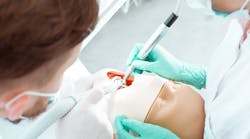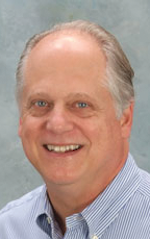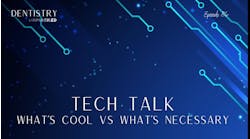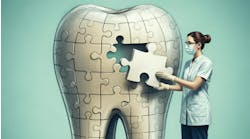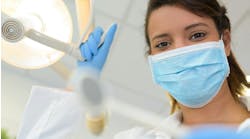It was just a few months ago at the beginning of March when I attended the annual American Student Dental Association (ASDA) conference in St. Louis. I saw young dental professionals from across the country eagerly walking the exhibition hall, visiting with the dental firms represented, and picking up brochures, toothbrushes, tooth-shaped stress balls, and lots of other freebies. These students were excited about their chosen profession and were eager to learn the latest industry advancements, and they gave me hope for the future of our profession.
A couple of weeks later, COVID-19 began to rear its ugly head, and much of our industry fell victim to its impact. Since that time, dental practices have not been alone in their struggles. Cities and states have issued stay-at-home orders, businesses have closed, and schools have closed their campuses and begun online learning. We have seen the virus’s impact around the globe and it’s forced us to develop a new normal.
New normal for dental student testing
The board and staff of Southern Regional Testing Agency (SRTA), a dental licensure assessment agency with acceptance in 35 states, has been actively engaged in adapting and building new models for our industry to meet that new normal. We’ve held conversations with dental schools and dental boards across the country to determine how to properly graduate and assess the skills and abilities of future dentists and hygienists in the age of the pandemic.
In any other year, this is the time that students complete their dental and hygiene educations and prepare to take their assessment exams required for state licensure. With the current circumstances, and the fact that our industry has been slow to adjust and move away from the historical requirements of live-patient exams, today’s students are faced with stalled opportunities to enter the profession unless our industry adapts.
To obtain traditional dental licensure, students must typically meet three basic requirements: a dental education, a national board written exam, and a dental or dental hygiene clinical skills exam. A few states offer the postgraduate year residency (PGY1) as an alternative to the clinical exam, and Delaware and New York actually mandate it.
It is within the clinical exam that hands-on skills in endodontics, prosthodontics, and restorative dentistry are assessed through agencies such as SRTA. Historically, during the clinical section of the exam, a student’s skills are assessed via live patients identified through a dental school or dental school clinic. The closure of these dental clinics, along with concerns for the safety of patients, professionals, and students during the pandemic, have made live patient exams impractical, and perhaps most importantly, not necessary to the goal of a quality assessment.
What SRTA offers
Licensing agencies such as SRTA have offered manikin-based portions of its exams in the endodontics and prosthodontics modules for several years. Still, up until now the restorative dentistry portion of the exam has been performed and assessed using only live patients.
For years, many in the dental industry, especially students and educators, have wanted to move away from using live patients in licensure assessment. SRTA has aligned with this thought. Those who advocated for non-patient-based exams were planning for events and pandemics such as what’s happening today, perhaps without fully realizing the weight of the problem. A non-patient-based exam eliminates unnecessary exposure for patients and students and means that students are no longer tasked with securing their own patients for the exams.
Live patients ran the risk of being deemed unacceptable by examiners on the day of the exam, and they were often dismissed due to unforeseen circumstances. Transitioning to a non-patient, manikin-based exam eliminates these risks and levels the playing field. It also releases the ethical burden students face when finding live patients, who are often from marginalized populations.
While I strongly support a non-patient-based exam, SRTA believes that assessing hands-on skills must remain a top priority. While a student may possess the clinical knowledge, if he or she cannot demonstrate hands-on competency, then the integrity of the student, school, and process could be compromised.
History of non-patient exam
SRTA began developing its non-patient exam more than two years ago. Today, it’s one of the few manikin-based exams in the nation that has been fully developed, beta-tested, and ready for the market. Working with the highly innovative dental model firm Acadental, the company has developed teeth that mimic accurate occlusion and tooth anatomy. SRTA and Acadental have produced cutting-edge products that are highly effective in simulating patients’ dental statuses and allow for proper assessment of such restorations, crowns, and bridges to be done with confidence.
The Joint Commission on National Dental Examinations announced the Dental Licensure Objective Structured Clinical Examination (DLOSCE) became available earlier this summer, which is a big step in modernization amid the pandemic. Because the DLOSCE does not use a manikin for hands-on skills assessment, a manikin-based exam can be used in conjunction with the DLOSCE to offer agencies and boards further competency testing of restorative skills.
Testing for dental hygienists
Assessment testing challenges exist in a similar manner for dental hygienists, and a similar approach is required. Currently, most hygienists cannot attain proper licensing without performing a live-patient assessment. It is equally important to test dental hygienists’ competencies and readiness, and therefore a manikin-based assessment must be available. To ensure consistency and meet the needs of hygienists, SRTA developed a complete non–patient-based dental hygiene exam that became available in early summer.
Final thoughts
I think back to the beginning of March when I was at the ASDA conference talking to bright-eyed dental students who were passionate about expanding their dental knowledge and striving to become the best dental professional they could be. These young professionals were already collectively advocating for a complete non-patient-based licensure process and they have been for a long time.
The coronavirus pandemic has required many industries to adapt in ways they didn’t foresee. The good news is that many in our industry did foresee these challenges. But sadly, that hasn’t stopped dental and dental hygiene students from being caught in the middle. Therefore, we must come together and recognize the urgent need for quality non-patient-based skills assessments.
We should all be actively advocating for dental and dental hygiene students and encouraging quality non–patient-based exams that properly assess knowledge and skills. The acceptance of moving toward a complete non-patient licensing exam for dentists and hygienists remains at the discretion of each state—either the licensing board or their legislative body. In states where a live patient is still required, we should reach out to those state dental boards and urge them to consider alternative options so that our country’s next wave of dental and dental hygiene students can be adequately and safely assessed.
George Martin, DDS, attended the University of Tennessee Health Science Center School of Dentistry, and he practiced for 43 years in Arkansas. Now happily retired from general practice, he recently joined the faculty at his alma mater on a part-time basis, where he is codirector of dental anatomy and morphology. He served as president of the Southern Regional Testing Agency. Dr Martin is a past member of the Arkansas State Board of Dental Examiners.
